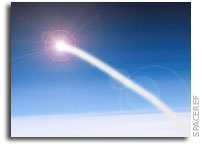Commercial Space Transportation: Industry Trends, Government Challenges, & International Competitiveness Issues

What GAO Found: Since a peak of 22 U.S. commercial space launches in fiscal year 1998, the annual number of launches generally ranged from 4 to 9 launches. The number of commercial space launches is expected to increase in the next 8 years as the National Aeronautics and Space Administration (NASA) plans to procure 51 launches from commercial cargo companies to resupply the International Space Station. FAA also expects space tourism to begin in the next several years, although no companies have applied for a FAA launch license and companies developing these services have experienced delays in the past. FAA faces several challenges overseeing the commercial space launch industry. For example, FAA expects its licensing and oversight responsibilities to expand in anticipation of an increased private sector role, suggesting that FAA and Congress must remain vigilant so that potential conflicts in FAA’s safety oversight and industry promotion roles do not occur. Also, as the commercial space launch industry grows and FAA continues to implement NextGen–FAA’s effort to develop a more automated, aircraft-centered, satellite-based air traffic management system–the agency will have to manage a mix of earth-based aircraft and space vehicles. FAA has begun to consider integrating spaceflight operations into NextGen. In past work, GAO recommended that FAA take several actions to improve its oversight of commercial space launches, including monitoring indicators of space tourism safety. FAA has taken some steps to address the recommendations.
Several factors have implications for federal indemnification policy. For example, under the current policy, the potential increase in the number of commercial space launches increases the probability of a catastrophic accident and the possibility of a cost to the federal government. Also, GAO’s preliminary work has raised questions about the soundness of the method currently used by FAA to calculate the amount of insurance that launch companies must purchase: FAA has not updated crucial components, such as the cost of a casualty, and its method is outdated, according to insurance industry officials and risk modeling experts. If the current indemnification policy is eliminated, the actual effects on the global competitiveness of the U.S. commercial space launch industry are unknown, in part, because it is not known whether launch customers might choose foreign launch companies over U.S. companies. However, launch companies said that the lack of government indemnification would decrease their global competitiveness by increasing launch costs.
The competitiveness of U.S. commercial space launch companies is affected by higher launch prices than those charged by companies in other countries and U.S. export controls, which affect U.S. companies’ ability to sell services abroad. The U.S. government has responded to foreign competition by providing the U.S. launch industry research and development funds, use of federal launch facilities, and indemnification for a portion of third-party claims.
Why GAO Did This Study: The commercial space launch industry is changing as NASA plans to begin procuring commercial cargo transportation services to the International Space Station later this year and companies are developing vehicles that could carry passengers for space tourism flights. FAA is responsible for overseeing the safety of commercial space launches and promoting the industry. A catastrophic commercial space launch accident could result in injuries or property damage to the public, or “third parties.” In anticipation of such an event, launch companies are required to purchase launch insurance, per calculations done by FAA and, under the Commercial Space Launch Act, the federal government is potentially liable for claims above that amount of purchased insurance. Unless reauthorized, the indemnification provision expires this year.
This testimony addresses (1) trends and forecasts in the commercial space launch industry and challenges FAA faces in overseeing and promoting the industry, (2) preliminary information on issues concerning federal indemnification for third party losses, and (3) challenges to global competitiveness for the U.S. commercial space launch industry. This statement is based on a past GAO report and testimonies on commercial space launches, updated with information GAO gathered from FAA and NASA on industry trends and recent FAA and NASA actions, and on-going work on federal indemnification. GAO is making no recommendations in this statement.
For more information, contact Gerald L. Dillingham at (202) 512-2834 or dillinghamg@gao.gov.









